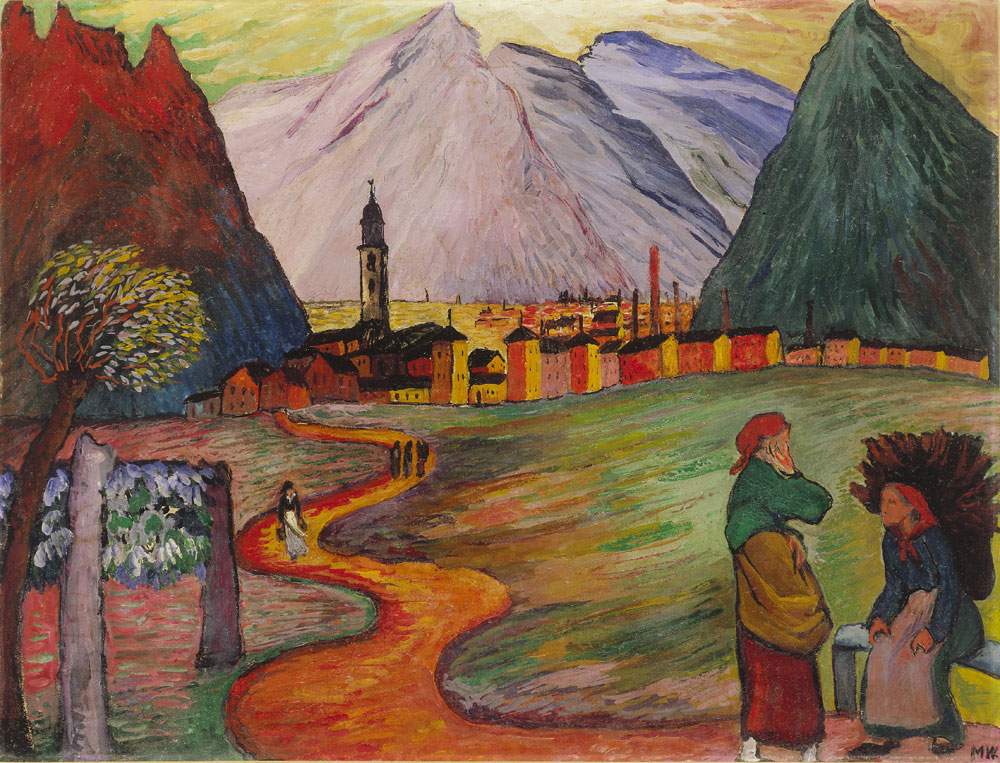From May 9, 2021, the Museo d’Arte della Svizzera Italiana (MASI) in Lugano presents the exhibition Sentimento e osservazione. Art in Ticino 1850-1950.
The evolution of the recent history of visual arts in Ticino is reflected in the museum collections. Indeed, since the 19th century, art in Ticino has not only focused on the regional art community, but also on the artists, collectors, dealers and scholars who chose Ticino as their adopted home. The Canton of Ticino has a double significance: on the one hand it has an Italian cultural identity and on the other it belongs politically to the Swiss federal state.
The presentation of MASI’s collections, enriched by some important works on loan, aims to offer visitors a view of how art in Ticino, starting from the founding of the federal state in 1848 until the end of World War II, evolved in its cultural context, and thus show the influences, coming from the South and the North, that established themselves in the territory. The exhibition route follows a number of milestones: from late Romanticism to Realism, from Impressionism to Post-Impressionism; through Symbolism, Expressionism, New Objectivity and Magical Realism to the birth of Surrealism.
As early as the nineteenth century, many artists from German-speaking Switzerland and other countries beyond the Alps began to stay in Ticino, initially on a temporary basis and then, beginning in the early twentieth century, always moving there permanently. These figures contribute to increasing influence on the regional artistic community, pushing it to take a stand against the more traditional orientation of Italian reality and innovative Nordic currents. In the years between 1850 and 1950, in accordance with the political and cultural climate of the time, there is thus either a dynamic attachment to the Italian tradition or a flourishing Ticino regionalism or even a slow opening toward modern movements from the North in the Ticino art world. Only from the end of the 1950s, when the Italian art scene finds a place within the context of the international avant-garde, do these contrasts begin to loosen up and Ticino artists also experience their identity belonging differently.
The exhibition is divided chronologically into five sections: starting with Landscape and History, it is traced how, since the birth of the Confederation, an identity-nationalist consciousness also arises in Swiss landscape painting and how for the first time the Ticino landscape becomes an interesting subject for painters from both sides of the Alps. The section Landscape as Symbolism aims to give an understanding of how of the European Symbolism movement the works of Ticino artists merged with those of Italian and Swiss-German artists. Sentiment and Atmosphere is devoted to Landscape. Post-Impressionism and Divisionism form a common stylistic horizon for a southern and northern view of landscape. The section Observation of Everyday Life combines different artistic conceptions of genre painting at the turn of the 19th and 20th centuries, from Verism and the poetry of the everyday to Magic Realism and the New Objectivity. Finally, the last section Modern Glimpses shows how early even in Ticino, thanks to the relocation of many artists, Cubo-Futurism and Expressionism disrupted the traditional conception of form and color.
The aim of the exhibition is to be a preparatory sketch, a starting point for an investigation that opens up multiple themes and reflection.
For more info: masilugano.ch
Image: Marianne von Werefkin, The Ticino (1927; oil and tempera on cardboard, 44.3 x 58 cm; Lugano, Museo d’arte della Svizzera Italiana, Cantone Ticino Collection).
 |
| MASI in Lugano dedicates an exhibition to the evolution of art in Ticino between the 19th and 20th centuries. |
Warning: the translation into English of the original Italian article was created using automatic tools. We undertake to review all articles, but we do not guarantee the total absence of inaccuracies in the translation due to the program. You can find the original by clicking on the ITA button. If you find any mistake,please contact us.